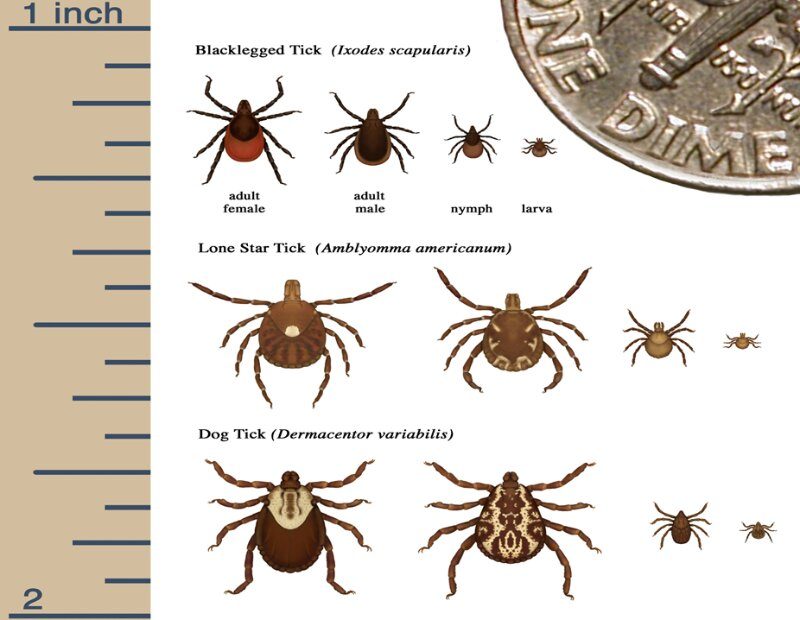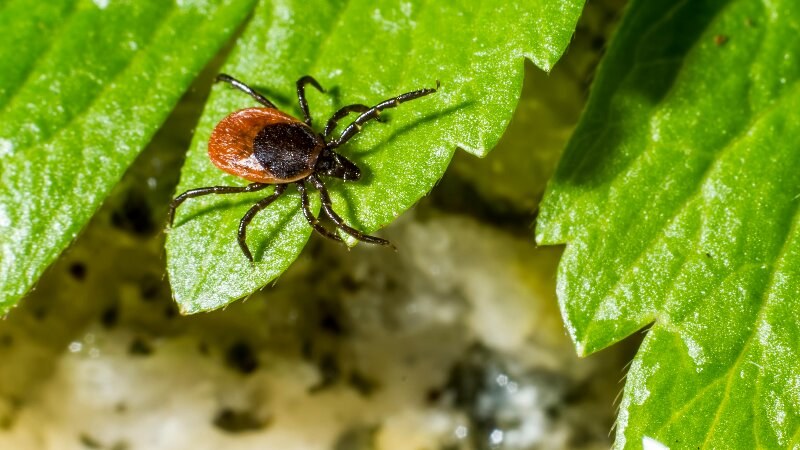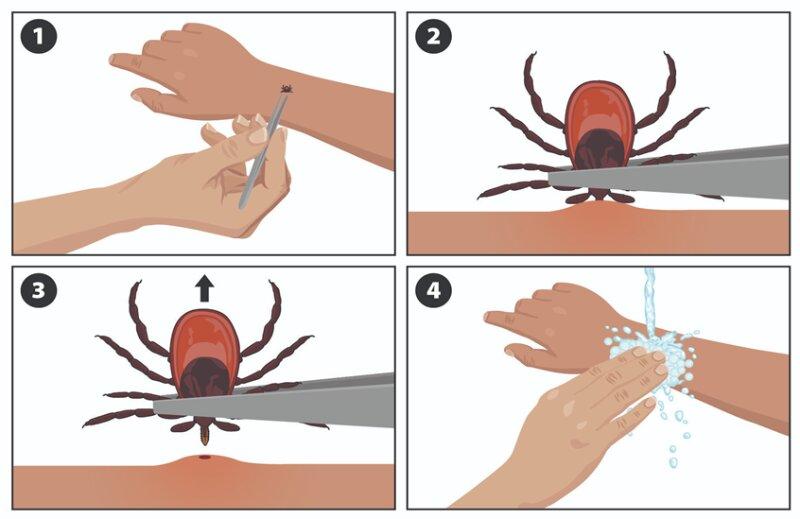Understanding the Possible Dangers of Tick Bites to Humans
Reading time: 6 minutesDid you know that ticks can spread over 20 diseases to humans?
While these critters may seem inconspicuous, their bites can have profound effects, ranging from mild discomfort to severe health issues. We unravel the complexities of tick-borne dangers—the diseases they carry, the symptoms to watch out for, and most importantly, how to protect yourself and your loved ones.

Diseases Transmitted by Ticks
Ticks are vectors for several diseases that can have severe consequences for human health.
Lyme disease is the most common tick-borne illness caused by the bacterium Borrelia burgdorferi. It can lead to debilitating symptoms such as fatigue, joint pain, and neurological problems if left untreated.
Rocky Mountain Spotted Fever is another dangerous disease transmitted by ticks. This bacterial infection can cause severe complications like shock and kidney failure if not promptly diagnosed and treated.
Tick-borne encephalitis (TBE) is a viral infection that affects the central nervous system, leading to symptoms ranging from mild headache and fever to severe neurological complications.
Symptoms and Complications of Tick-Borne Illnesses
Tick-borne illnesses can cause many symptoms and complications that should not be taken lightly. Lyme disease, for example, can lead to chronic fatigue, joint pain, and even heart problems.
Rocky Mountain spotted fever can cause severe headaches, high fever, and a rash that spreads rapidly. Without prompt treatment, this disease can result in organ failure and death.
Tick-borne encephalitis can initially cause flu-like symptoms, but in severe cases, it can lead to brain and spinal cord inflammation, potentially causing long-term neurological complications.
How To Prevent Tick Bites
Don’t take these bugs lightly. Tick prevention techniques are essential to reduce the risk of tick bites and transmitting tick-borne illnesses. Here are some effective preventive measures:
Avoid Tick-Infested Areas
When possible, avoid wooded areas with overgrown grass and leaf litter, where ticks are commonly found. If you must be in these areas, try to stay in the center of the trails to minimize exposure.
Wear Protective Clothing
Wear long sleeves, pants tucked into socks, and closed-toe shoes to cover as much of your body as possible. Consider treating your clothing with permethrin, an insect repellent that can repel ticks.
Use Tick Repellent
Apply a PMRA-approved tick repellent with at least 20% DEET or 20% Picaridin to exposed skin. Remember to follow the label's instructions.
Perform Regular Tick Checks
After spending time in tick-prone areas, thoroughly check your and your pet’s body for ticks. Pay close attention to the scalp, neck, underarms, and groin areas where ticks commonly hide.
Remember, early detection and treatment are crucial in preventing the spread of tick-borne illnesses.

How To Get Rid of and Prevent Ticks in Your Yards
Prevention is half the cure. We’ve talked about diseases and how to prevent bites in the first place, but what do you do if you have a tick problem in your yard?
Here are some of the best ways to keep ticks off your outdoor space:
- Apply pesticides outdoors (more on that later)
- Get rid of litter—leaves, trash, tall grass, and untidy bushes around your home and at the edge of your lawn.
- Mow your lawn frequently.
- Ticks typically don’t like wood chips or gravel. Place this between your lawns and wooded areas to keep ticks from entering your property.
Recognizing and Removing Ticks Properly
Ticks are tiny and difficult to spot, often no bigger than a sesame seed, and can easily go unnoticed.
Check for ticks after visiting tick-prone areas such as wooded areas or grassy fields. Look for any redness or swelling—it may indicate a tick bite. Other symptoms to be aware of include fever, headache, fatigue, and a rash that resembles a bullseye pattern.
Here’s the critical part: if you find a tick attached to your skin, it’s essential to remove it properly to minimize the risk of infection. And here’s how you do it:
- Use fine-tipped tweezers to grasp the tick as close to the skin's surface as possible.
- Pull upward with steady, even pressure. Don’t squeeze or twist the tick. This can increase the risk of infection.
- After removal, clean the bite area by rubbing alcohol or soap with water.
If you can’t remove the tick or experience any concerning symptoms, head to an urgent clinic or the ER.

FAQs for Tick Pest Control
When are ticks most active?
Ticks are active when the temperature isn’t below 0°C, and there’s no snow. You’ll likely encounter a tick in spring, summer, and fall. Nevertheless, ticks can remain active throughout the year under favourable conditions (when it’s warmer).
What time of day are ticks most active?
One study from the 1980s suggests that adult and nymphal ticks were most active between 6 a.m. and noon.
Where do ticks typically hide?
Here’s an interesting fact: most people complain of tick bites while doing typical home activities like gardening and playing with pets. You don’t even need to step outside your property to be bit by ticks. This is primarily because ticks are active in unmown areas like weeds, tall grass, and other humid areas.
Can you feel a tick bite?
Most times, you won’t feel a tick bite.
Can ticks jump on you?
The good news is that ticks can’t jump or fly. The bad news is they’re incredibly resilient and patient. They hold onto leaves or grass by their third and fourth pair of legs. While in that position, they have their first pair of legs outstretched, waiting to climb onto a host. Yikes!
Do I need professional tick control?
You need professional tick control if you live in an area with a high tick population. Ticks don’t just go away on their own. They multiple. Fast. Ticks responsible for the spread of Lyme disease can lay over 3,000 eggs in a batch. Some types can even lay up to 15,000 eggs. If you leave a tick infestation in your yard untreated, it could soon become a problem indoors as well.

Is Your Yard a Bite-Free Zone? Call Buzz Boss, Your Trusted Solution for Tick Pest Control
We’ve established why tick bites are a serious threat to human health. If you’re looking for a reliable and eco-friendly tick pest control service to protect your property from a tick invasion, give Buzz Boss a call.
As a leading pest control service in Canada, they offer effective and customized solutions to prevent and remove ticks and other pests from your yard with our BuzzShield Complete. Our licensed technicians use quality products and create a shield around your property to keep ticks out.
With Buzz Boss, you can enjoy your outdoor space without worrying about the dangers of tick bites. We’re in Calgary, Edmonton, Red Deer, Regina, Saskatoon, Winnipeg, and Okanagan.

